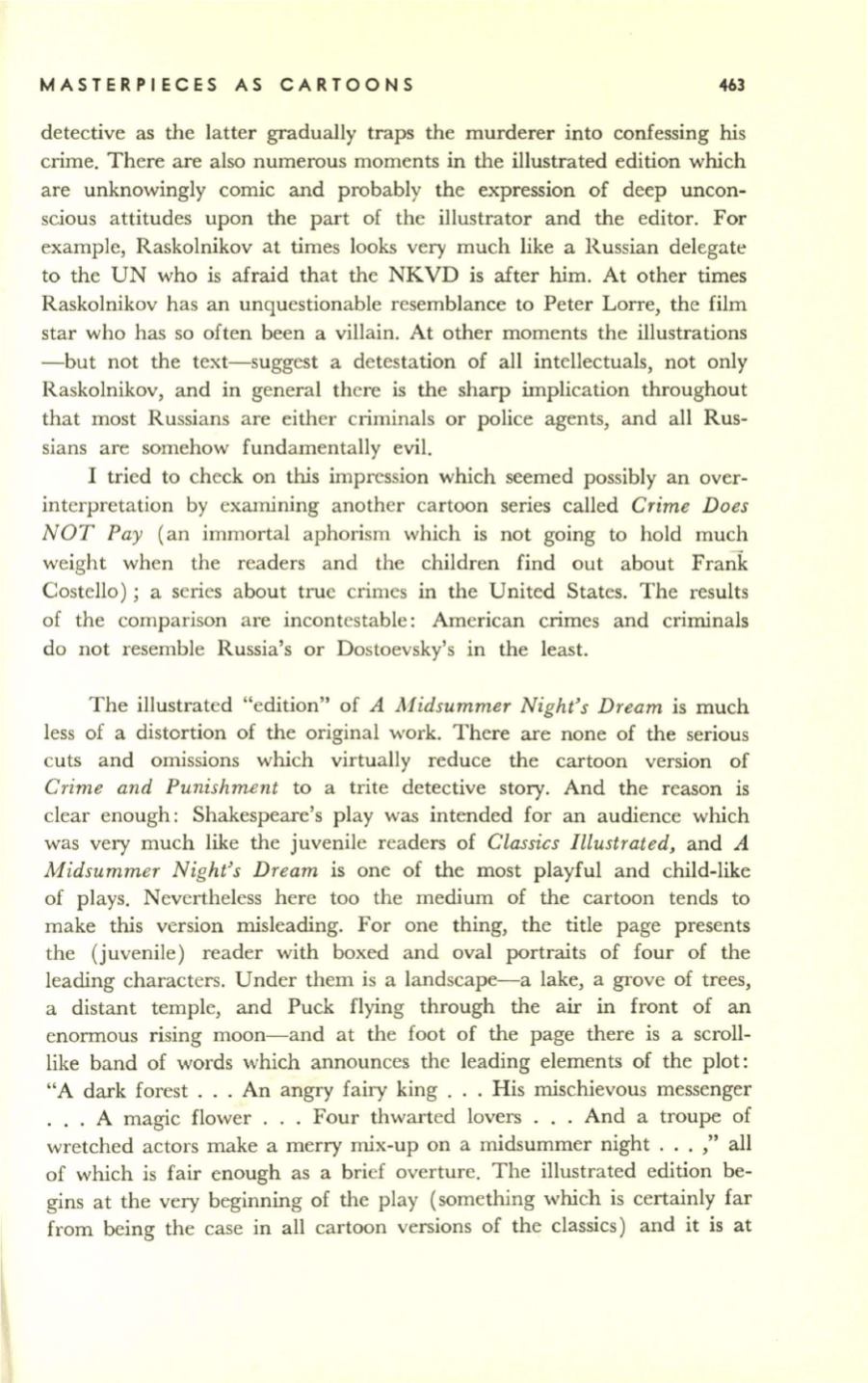
MASTERPIECES AS CARTOONS
463
detective as the latter gradually traps the murderer into confessing his
crime. There are also numerous moments in the illustrated edition which
are unknowingly comic and probably the expression of deep uncon–
scious attitudes upon the part of the illustrator and the editor. For
example, Raskolnikov at times looks very much like a Russian delegate
to the UN who is afraid that the NKVD is after him. At other times
Raskolnikov has an unquestionable resemblance to Peter Lorre, the film
star who has so often been a villain. At other moments the illustrations
-but not the text-suggest a detestation of all intellectuals, not only
Raskolnikov, and in general there is the sharp implication throughout
that most Russians are either criminals or police agents, and all Rus–
sians are somehow fundamentally evil.
I tried to check on this impression which seemed possibly an over–
interpretation by examining another cartoon series called
Crime Does
NOT Pay
(an immortal aphorism which is not going to hold much
weight when the readers and the children find out about Frank
Costello); a series about true crimes in the United States. The results
of the comparison are incontestable: American crimes and criminals
do not resemble Russia's or Dostoevsky's in the least.
The illustrated "edition" of
A Midsummer Night's Dream
is much
less of a distortion of the original work. There are none of the serious
cuts and omissions which virtually reduce the cartoon version of
Crime and Punishment
to a trite detective story. And the reason is
clear enough: Shakespeare's play was intended for an audience which
was very much like the juvenile readers of
Classics Illustrated,
and
A
Midsummer Night's Dream
is one of the most playful and child-like
of plays. Nevertheless here too the medium of the cartoon tends to
make this version misleading. For one thing, the title page presents
the (juvenile) reader with boxed and oval portraits of four of the
leading characters. Under them is a landscape-a lake, a grove of trees,
a distant temple, and Puck flying through the air in front of an
enormous rising moon-and at the foot of the page there is a scroll–
like band of words which announces the leading elements of the plot:
"A dark forest ... An angry fairy king ... His mischievous messenger
... A magic flower ... Four thwarted lovers ... And a troupe of
wretched actors make a merry mix-up on a midsummer night ... ," all
of which is fair enough as a brief overture. The illustrated edition be–
gins at the very beginning of the play (something which is certainly far
from being the case in all cartoon versions of the classics) and it is at


